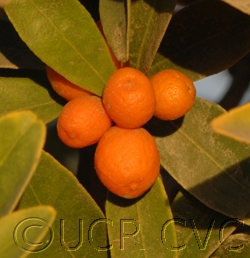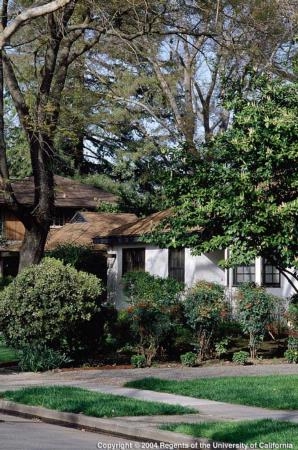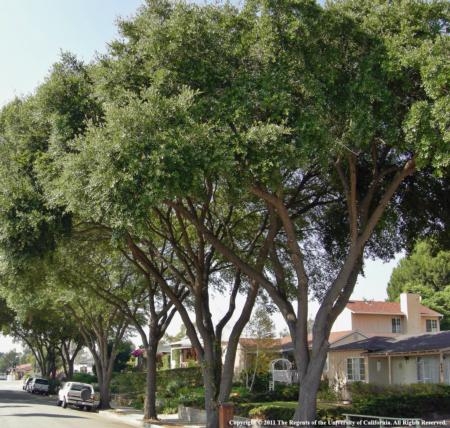- Author: Chris M. Webb
The UC Master Gardeners will be busy this summer with outreach and education events throughout Ventura County. Some of their efforts will include:
The Master Gardeners have prepared a free educational speaking series this summer at the Goebel Senior Center. The Goebel Senior Center is located in Thousand Oaks next to the Grant R. Brimhall Library. You do not need to be a senior to attend the classes.
- All About Roses – Saturday, June 23rd
- Orchids – Saturday, July 28th
- Sustainable Garden – Saturday, August 28th
- Wildlife, Birds, and Butterfly Gardens – Saturday, September 22nd
On Saturday August 18, the Master Gardeners will hold a Home Garden Workshop. This event will be held in Santa Paula, at the beautiful UC Hansen Agricultural Center. The theme of this workshop will be “Planning and Growing A Cut-Flower Garden, and Creating Beautiful Floral Arrangements”. There is a $25.00 fee to attend the workshop.
The Master Gardeners will also be at the Ventura County Fair. You can find them in the landscape design section of the fairgrounds. Their booth will be staffed several hours per day.
The Master Gardener Helpline is staffed Tuesday and Thursday afternoons from 1:00 to 4:00. This is a great opportunity to get one-on-one assistance. The helpline provides gardening support to the public by phone at 645-1455, by email at mgventura@ucdavis.edu, or in person at 669 County Square Drive, Suite 100 in Ventura. If planning to come by in person, you may want to call first to verify a Master Gardener is available.
Other gardening resources can be accessed through this page of our website.
Check out the UCCE Ventura County Master Gardner websiteoften for other local events!
- Author: Chris M. Webb
Our office has recently been receiving calls about water bills and landscape plants. The rising cost of water will only continue to influence plant choices as we move forward.
UC’s A Guide to Estimating Irrigation Water Needs of Landscape Plantings in California: The Landscape Coefficient Method and Water Use Classification of Landscape Species is a helpful resource and can be accessed online in its entirety.
Color photos, tables, and fully explained formulas can be found throughout this highly organized 160 publication. Chapters include:
- Estimating water requirements for crops and turf
- Estimating water needs for landscape plantings
- Using the landscape coefficient formula
- Using the landscape coefficient to estimate landscape evapotranspiration
- Irrigation efficiency and calculating the total amount of water to apply
- Putting it all together: A worksheet for calculations
- Using water estimates in landscape planning and management
- Special planting situations
- Author: Chris M. Webb
Asian citrus psyllid, has not recently received much attention in the news media. However the pest, and the deadly bacterial disease it can carry, are still of great concern.
The Asian citrus psyllid (ACP) has now been found in eight California counties. Quarantines are in place. The psyllid by itself is not much of a problem; it is its ability to spread the fatal disease that has the potential to devastate both the California citrus industry and backyard citrus throughout the state.
Huanglongbing (HLB) is the name of the disease ACP can carry. Citrus and closely related plants are at risk. The disease is transmitted between plants by the psyllid. The psyllids transmit the disease to healthy plants and trees. After feeding on an infected plant, the ACP will transmit HLB to every other plant it feeds on.
While much outreach has focused on citrus trees, it is important to remember there are other plants that can host both ACP and HLB. This list from the University of Florida provides both the common and Latin plant name for many known hosts. Hosts include: curry leaf, ornamental orange-jasmine, and all the varieties of citrus, including kumquat, mandarin, grapefruit, orange and all of their hybrids.
Please remember to check your citrus and closely related plants regularly for signs of ACP or HLB. General information about this pest disease complex can be found on this section of the CDFA website. For local updates, the Ventura County ACP Task Force is a great source of information.
- Author: Chris M. Webb
As the season for outdoor activities and gatherings gets into full swing, we would like to remind you to burn only local wood at campfires and cookouts.
Why is burning only local wood important? Several destructive invasive pests attack trees and continue to inhabit the wood after the tree has died. When and if an infested tree is cut up and used for firewood the pests go along for the ride and broaden their range. The pests can be extremely small and invisible to the naked eye.
These pests include:
- The Red Bay Ambrosia beetle (RBA). This tiny insect and the fungus it carries can kill a healthy avocado tree in six months or less. Laurel Wilt Disease caused by the fungus carried by RBA is already established in the South Eastern portion of our country and is expected to travel to our state. RBA has the potential to devastate our avocado industry along with backyard trees.
- The Gold Spotted Oak Borer (GSOB) is already in our state and is responsible for killing tens of thousands of oak trees. The loss of oak trees, especially in the wild brings many negative impacts: loss of wildlife habitat, greater risk of erosion and catastrophic fire, invasion of noxious weeds, as well as safety risks related to falling trees or branches. Additional information about GSOB can be found at this website.
- The Tea Shot Hole Borer is also in California, but to date there have been no reports of the potentially deadly fungal damage it can spread. The Tea Shot Hole Borer is also a serious pest of avocado trees. Other hosts include: castor bean plant, black locust, lychee, and acer.
Please do what you can to minimize the spread of these destructive invasive species. Remember when it comes to firewood -- buy it where you burn it!
- Author: Chris M. Webb
Over the last 10 years, the Goldspotted Oak Borer (GSOB) has killed approximately 80,000 oak trees in San Diego County – including many large trees that were hundreds of years old.
To date GSOB has caused significant economic, ecological, cultural, and aesthetic losses in San Diego County. The costs of dead tree and infested wood alone is staggering.
GSOB (Agrilus Auroguttatus) is an invasive insect in California. Because it is a non-native pest there are not natural defense mechanisms to keep this insect in check. There is concern among experts that GSOB will continue to move north through California. Susceptible oak species are: coast live oak, California black oak, and canyon live oak.
It is highly suspected that GSOB entered California in firewood. GSOB larvae can live under the bark of dead oaks for over a year before exiting as adults. It is likely GSOB has spread so quickly in San Diego County via firewood movement. Because of this, it is extremely important to be mindful of where your firewood comes from. The movement of infested firewood could easily establish this destructive pest throughout the state.
To learn more about GSOB, or to get involved in preventing its spread, please see the gsob.org website.
And remember, to protect California’s Forest – Buy and Burn Local Firewood! Don’t move it around!








